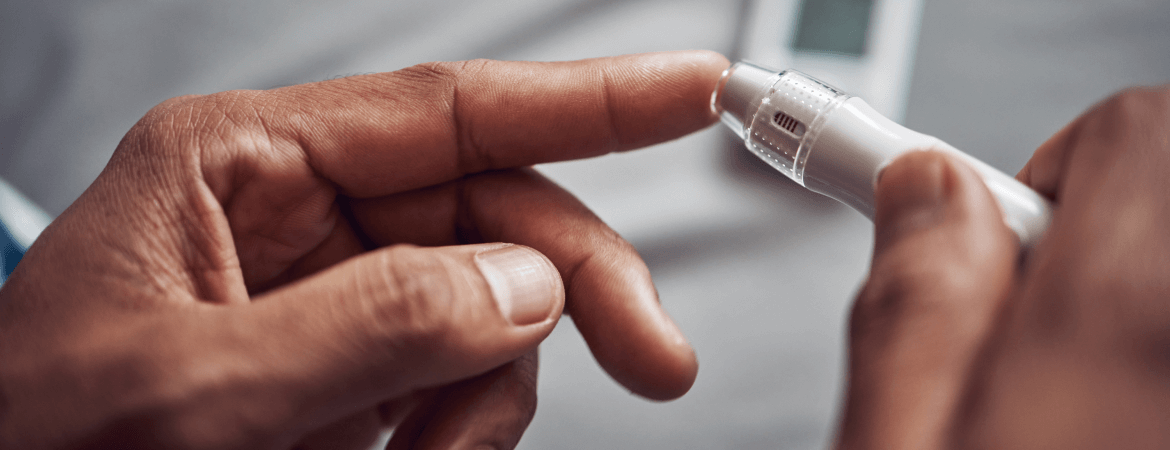
The silent symptoms of diabetes
When we think of diabetes, many of us assume we’ll always recognise the signs and symptoms. However, there’s a reason that diabetes is often called a “silent condition”. For many people, diabetes doesn’t present with big or clear signs. It can start quietly as moments of fatigue or the odd but sudden excessive thirst, frequent urination, or constant hunger.
The importance of health checks
There’s an important reason that doctors urge you to attend regular health checks. These screenings are essential to help spot potential health problems as soon as possible. One of these is a blood glucose health check; a practical tool for managing diabetes. With regular blood glucose testing, you can quickly detect any imbalances, helping you stay on top of your health. The good news is that you could even do a blood glucose test yourself with a home kit.
FYI: High blood glucose is often a red flag of diabetes or pre-diabetes. Regular checks can alert you to elevated levels before they cause more severe health problems.
Plus, people with diabetes are at risk of complications like heart disease, kidney failure, nerve damage, and vision problems. Managing blood glucose levels through regular testing can significantly lower these risks.
What are the silent symptoms of diabetes?
In the case of diabetes, silent doesn’t necessarily mean unnoticed. Rather think of these symptoms that could easily be mistaken for everyday issues, like stress or overwork. For example, it’s easy to chalk fatigue up to working late hours, yet it could be an indicator of diabetes.
Other red flags include frequent urination (especially at night), constantly feeling hungry even if you’ve just eaten, excessive thirst, chronic fatigue and lack of energy, blurred vision, and unexplained weight loss.
Also on the alert list: don’t ignore cuts and wounds that are slow to heal, and tingling, numbness or burning in your hands and feet.
Another overlooked symptom is dark patches on your skin. These are usually on your neck or armpits.
Silent symptoms can still affect you
As these symptoms take effect in your body, your health starts to suffer. Diabetes can affect everything from your daily energy levels to your mental health. Once you’re diagnosed with diabetes, you must maintain a nutritious diet, exercise regularly, rest when needed, and manage your blood sugar levels. As a diabetic, your immunity takes a hit and you may find yourself at risk for other health conditions too.
So, once you notice these symptoms, it’s definitely time for a check-in with your doctor.
Good to know
If there’s one important thing you can do right now to mitigate your risk for diabetes: watch your sugar intake. The American Heart Association recommends that added sugars should make up less than 10% of total daily energy intake, with an ideal goal of less than 5% for additional health benefits.
This translates to about six teaspoons (25 grams) of added sugar each day for women. For men, it’s approximately nine teaspoons (36 grams) of added sugar per day.
With that in mind, let’s consider how much sugar we have in one day, and if you’re diabetic, it’s even more important to reduce your sugar intake to better manage your health.
References:
- https://www.everydayhealth.com/type-2-diabetes/
- https://www.verywellhealth.com/14-foods-for-managing-blood-sugar-with-diabetes-11825417
- https://wellbeingsafrica.com/know-your-numbers-blood-glucose-tests/
- https://www.heart.org/en/healthy-living/healthy-eating/eat-smart/sugar/how-much-sugar-is-too-much
Disclaimer
This article is for informational purposes only. Always check with your doctor or medical practitioner about any health concerns, before embarking on any fitness or nutrition programme, or using any medication.
